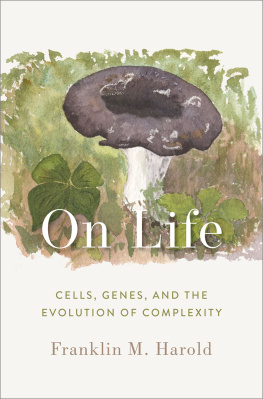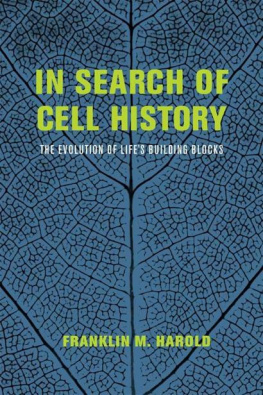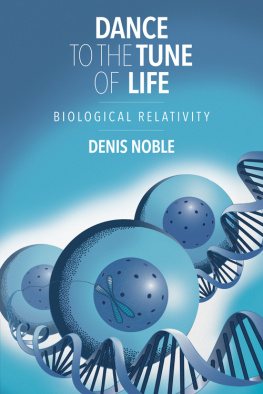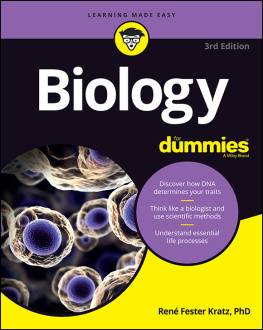On Life

Oxford University Press is a department of the University of Oxford. It furthers the Universitys objective of excellence in research, scholarship, and education by publishing worldwide. Oxford is a registered trade mark of Oxford University Press in the UK and certain other countries.
Published in the United States of America by Oxford University Press
198 Madison Avenue, New York, NY 10016, United States of America.
Oxford University Press 2022
All rights reserved. No part of this publication may be reproduced, stored in a retrieval system, or transmitted, in any form or by any means, without the prior permission in writing of Oxford University Press, or as expressly permitted by law, by license, or under terms agreed with the appropriate reproduction rights organization. Inquiries concerning reproduction outside the scope of the above should be sent to the Rights Department, Oxford University Press, at the address above.
You must not circulate this work in any other form and you must impose this same condition on any acquirer.
Library of Congress Control Number: 2021945899
ISBN 9780197604540
eISBN 9780197604564
DOI: 10.1093/oso/9780197604540.001.0001
To all who believe, as I do, that the true object of science is neither to accumulate knowledge nor to solve practical problems, but to make the world intelligible.
Contents
From birth to death we are immersed in an ocean of life, a cornucopia of living things: not only other humans but also animals, plants, insects, and all manner of crawly creatures. Life is so abundant, ubiquitous, and familiar that we seldom give thought to the nature of living things, and what sets them apart from nonliving ones such as stones, clouds, and running water. The object of this small book is to make the phenomenon of life intelligible to readers who are not biologists by profession. What is life, what makes living things tick, how are they related to the world of physics and chemistry, and how did they come to be as we find them? These are the fundamental questions that define biology, and what we have learned deserves to be part of the mental furniture of anyone who aspires to scientific literacy.
Like other portentous words, Life has multiple meanings. In everyday speech it refers almost exclusively to human affairs: we are preoccupied with making a living while also living a good life, and some are obsessed with when life begins. The usage here is entirely different, that of the naturalist. Our subject is the parade of forms that share the quality called Life, those living today as well as those known to us only through fossils. We humans hold a place in these ranks, and not a minor one either, but the show is not primarily about us.
In the latter half of the twentieth century the staid science of biology was transformed from a largely descriptive practice centered on natural history into an intensely experimental pursuit, focused on how living things work at the level of cells and molecules. The project has been spectacularly successful, finding answers to questions that could barely be formulated before the Second World War. The nature and general architecture of cells, the mechanism of heredity, and how energy is captured and harnessed have largely been clarified. Microbes have been fully integrated into the life sciences, and evolution is recognized as the overarching principle that makes sense of the diversity of life. Applications to medicine, industry, agriculture, and warfare increasingly rule our lives. At the same time, the gap keeps widening between us, that is, those who speak Science and take its precepts for granted, and the general public, who understand less and less of what we are up to and are beginning to question our goals and motives. Here, I suspect, is a major cause of the decline in sciences standing in our time. I do not presume to bridge that gulf, but do hope to lay down a few steppingstones.
The torrent of discoveries has cast a flood of light on age-old questions that straddle the line between science and philosophy: What defines the living state, how did mindless matter beget purpose and meaning, and how did life arise from the dust of the cosmos when the world was young? What we have learned underscores how extraordinary living things are. Intricate and complicated, they obey all the laws of chemistry and physics, yet the existence of life could never have been predicted from those laws. Life stands squarely within the material world but at the same time stands apart, flaunting its autonomy, purposeful behavior, and in one instance the capacity to reflect on its own nature. Now that we know most of the basics about the way living things work, we need to integrate all that mass of facts into a comprehensible and coherent framework; in a phrase, to make biology intelligible. The question so what is life? is not one for the laboratory scientist: you cant get a grant to study that. But it is an inescapable subject for scientists with a philosophical bent, and over the past two decades I have become obsessed with it.
The trouble is that the volume of biological knowledge is now so vast that it overwhelms the capacity, and the will, of anyone who seeks to grasp large chunks of it whole. Increasingly, the mass of particulars obscures their meaning. I therefore intend to set aside as much of the burden of detail as possible, to extract what seem to me the central principles and to highlight the major questions that biologists ask of nature. This unavoidably entails stepping outside the fields in which I can claim technical expertise, and making personal judgments on matters on which scientists disagree. Science is a journey that remains unfinished, a never-ending conversation in pursuit of understanding. My hope is that what I say here will help readers, and even myself, to better grasp the wonderful and perplexing phenomenon of life.
What do we mean by understanding? I use this commonplace term in the sense set forth by the Oxford philosopher Mary Midgley: Understanding anything is finding order in it. It is simply putting [the object] into a class of things meaningfulnoting how its parts relate to it as a whole, and how it itself relates to the larger scene around it. I am not here to present an overview of biology (Ernst Mayr has done that, far better than I could), but to examine the framework of ideas that interpret and explain the facts.
I am a mainstream scientist, steeped in a lifetime of research into the workings of microorganisms, but over the years I have acquired my own glasses through which to view the world. Most of my opinions fall well within the range of conventional thought, with one possible exception. It is fashionable nowadays to minimize the gap between living things and inanimate matter, and to underscore the fact that life is part and parcel of the common physical universe. That statement is assuredly true, but I am even more impressed by the great gulf between things that have life and those that do not. One could say (paraphrasing the geneticist Theodosius Dobzhansky) that nothing in biology makes sense except in the context of chemistry and physics, but everything in biology comes in its own distinctive flavor. Reflection along these lines has engendered an inclination to physiology and complex systems, and a perspective on life drawn from its history. Unlike chemistry and physics which draw on universal laws, biology explores the consequences and ramifications of a singular event, the origin of life. Life as we know it revolves around cells, each of which is an intricate system of myriads of molecules integrated into a unit of form and function. DNA is a database of central importance, but it does not direct cellular operations; those emerge from cell dynamics and are seldom spelled out in the genes. Living things are products, not of design but of the interplay of heredity, variation, and natural selection. Finally, our voluminous knowledge is bracketed by two enduring mysteries: How life began, and how mind arose from matter. I like to describe my attitude as a sort of vitalism, a latter-day or molecular vitalism. Let what I have written here stand as an introduction to an unfashionable point of view.









